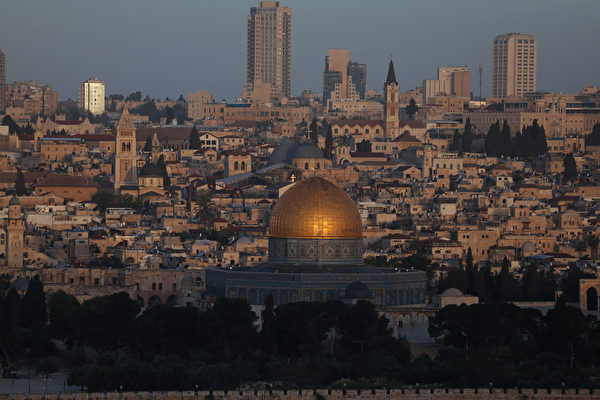Iran directly launched about 200 missiles at Israel on Tuesday (October 1st), and the United States stated that this action is a significant escalation by Iran in the Middle East situation.
For decades, the conflict between Israel and Iran has been affecting the Middle East region. However, most of the time, the two countries have been engaging in silent attacks. Iran often attacks Israel through proxies but avoids escalating into direct war against Israel.
With the outbreak of war between Israel and the Palestinian terrorist organization Hamas, the Middle East conflict has entered a dangerous new phase.
At the end of September, the Israeli army assassinated a key ally of Iran, the Hezbollah leader, and entered southern Lebanon. This development has intensified the tense situation in the Middle East.
Israel and Iran began to ally during the rule of the last monarch of Iran, Shah Mohammad Reza Pahlavi in the 1950s, a relationship that ended after the outbreak of the Iranian Islamic Revolution in 1979.
Iran’s new leadership has taken a strong anti-Israel stance and supports organizations that frequently engage in combat with Israel, particularly Hamas, Hezbollah, and the Houthi rebels. These organizations are designated as terrorist groups by the United States.
Lebanon holds one of the oldest frontlines in Israel’s covert wars. In response to Israel’s invasion of southern Lebanon in 1982, a militia organization formed by Shia Muslim Lebanese, predominantly led by Iran, developed into Hezbollah. To some extent, they serve as proxies for Iran’s Islamic Revolutionary Guard Corps.
Israel and Hezbollah have engaged in multiple conflicts, including a battle in 2006. Since Hamas attacked Israel from the Gaza Strip on October 7, 2023, leading to the Hamas-Israel war, Hezbollah has been launching missiles, mortars, and rockets into northern Israel almost daily in solidarity with Hamas, prompting Israel to retaliate with its firepower.
Earlier this year, Israel and Iran engaged in direct clashes on each other’s territories for the first time. On April 13, Iran launched a large-scale missile and drone attack on Israel. However, the vast majority of missiles were successfully intercepted by Israel without causing casualties.
Just two weeks prior, an airstrike targeted Iran’s diplomatic building in Damascus, Syria, attributed widely to Israel but not acknowledged by Israel. The attack resulted in the deaths of seven Iranian military personnel, including a senior Revolutionary Guard commander.
On April 19, Iran’s attack prompted a more limited retaliation from Israel. While the losses from both attacks were minimal, they marked the beginning of open, direct confrontations between the two countries.
Of course, covert attacks between these two nations are more common. Iran and Hamas have both accused Israel of being responsible for the assassination of Hamas political leader Ismail Haniyeh in Tehran on July 31.
According to the New York-based think tank Council on Foreign Relations, Iran has also engaged in cyber warfare against Israel, including attempts to disrupt computer networks and water systems in two regions of Israel.
Israel’s military holds a technological advantage over Iran’s. This is intertwined with the military and financial aid from the United States, which has long sought to ensure Israel’s strategic dominance in the Middle East as part of its commitment to the security of the Jewish state.
For instance, Israel is the only country in the Middle East that can purchase Lockheed Martin’s F-35 fighter jets from the United States. The F-35 fighter jet is the most expensive weapon system in history.
Bloomberg reported that it is widely believed that Israel possesses nuclear weapons, although it has never officially acknowledged such capability. If Iranian leaders choose to enrich uranium to the 90% level typically used for such weapons, Iran has accumulated enough enriched uranium to produce several nuclear bombs. However, it still needs to master the weapons-making process to produce a deliverable device capable of hitting distant targets.
Sanctions and political isolation have hindered Iran’s access to foreign military technology, prompting them to develop their own weapons, including the missiles and drones launched at Israel in April.
Most of Iran’s fighter jets are old models developed before the 1979 revolution. Therefore, Iran aims to upgrade its military capabilities through continued cooperation with Russia, which constantly upgrades its military equipment. So far, the high-end Russian military equipment Iran desires the most includes the Su-35 fighter jet.
To offset its technological shortcomings, the Iranian military has produced a significant number of ballistic and cruise missiles as well as inexpensive drones.
During the missile and drone attacks against Israel in April, Iran realized that breaking through Israel’s robust air defense system is a challenge. Firstly, they need to circumvent Israel’s fighter jets. Secondly, Israel’s Arrow and Iron Dome defense systems present obstacles.
According to the Israeli military, these systems, along with support from the United States and other allies in the region, intercepted over 99% of the 300+ drones and missiles launched by Iran.
Iran’s arsenal includes surface-to-air missile systems, such as Russia’s S-300 air defense missiles, and domestically produced Alman anti-ballistic missile systems. These systems are far less advanced compared to Israel’s defense systems. Israel’s defense systems have proven successful in actual combat, prompting Iran to favor asymmetric warfare rather than direct confrontations with Israel.
(Some information in this article is based on reporting by Bloomberg)

